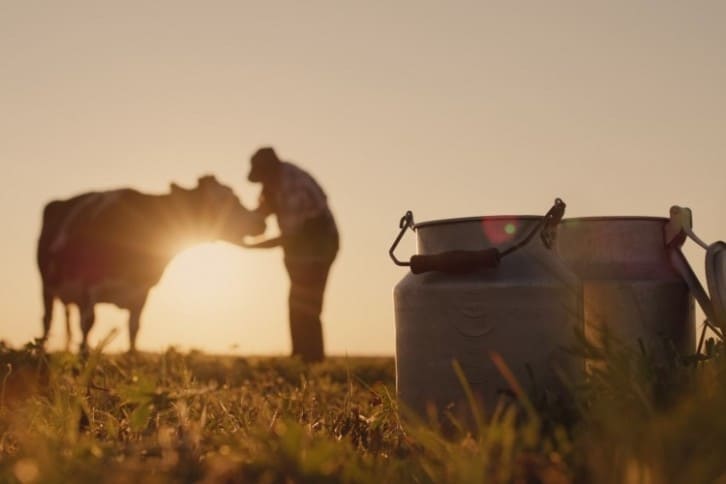
Exporters have shifted their interest to dairy protein products in recent years while WMP exports have declined – but dairy remains a crucial contributor to the Kiwi economy and acts as a ‘shock absorber’ for farmers in volatile times.
A new report into New Zealand dairy’s export earnings has revealed the sector generated nearly NZ$26bn/US$15.29bn in export revenue in the 12 months to April 2023. This means one in four export dollars came from dairy exports.
Commissioned by trade bodies DairyNZ and the Dairy Companies Association of New Zealand (DCANZ) and carried out by Sense Partners, the report also showed the value of dairy exports grew by 45% over the last five years.
The industry has also acted as a ‘shock absorber’ for local communities, who have faced a fall in milk price. According to DairyNZ head of economics Mark Storey, export earnings ‘translate into well-paying jobs in the sector and enable the purchase of goods and services from other sectors’. In August, Fonterra cut its farmgate milk price forecast to between NZ$6 and NZ$7.50 per kgMS, down from the revised threshold of NZ$6.25-NZ$7.75 per kgMS announced two weeks prior. According to CLAL, the monthly average milk price was down 32,45% year on year in July 2023, standing at NZ$51.30/US$30.17 per 100kg exclusive of VAT.
Storey commented: “There will inevitably be an impact from the recent fall in milk price, with farmers limiting non-essential expenditure and limiting their purchases short-term where possible. However, this analysis shows that the sector itself absorbs some of the impacts in dairy farmers’ profits. Despite lower milk prices, dairy farmers will continue to hire staff and purchase essential supplies to run their farms.”
According to the report, dairy farmers spent almost NZ$8bn/US$4.71bn on goods and services in the year to March 2023, while processors’ expenditure was NZ$19.6bn/US$11.53bn in the same period. Storey said the sector has generates NZ$3.6bn/US$2.12bn in wages per year and employs 55,000 people both on and off farms, making it ‘a significant employer’ at a community level. “For instance, in Waimate, one in three jobs are in the dairy sector and wages make up 52% of total wages paid there. Dairy also employs more than 20% of workers in both South Taranaki and Westland districts, and pays over 40% of both districts’ total wages.” Jobs in dairy also account for more than 1 in 10 across eight further districts and offer better wages than comparable sectors, according to the report.
Individual dairy products including whole milk powder, skim milk powder, butter and dairy spreads, protein products and cheese are all multi-billion-dollar exports, but there’s an evident shift towards exporting more dairy protein products and lower volumes of whole milk powder in recent years. DCANZ executive director Kimberly Crewther said: “The analysis highlights that New Zealand dairy exporters continue to change their market offerings in response to demand, with the proportion of whole milk powder reducing from 36.9% in 2019 to 31.6% in the year to April 2023, while dairy protein products having increased to 13.2% of the product mix, up from 8.6% in 2019.”
Trade barriers continue to be felt too, according to Crewther, highlighting the importance of free trade agreements (FTAs), such as the UK-New Zealand deal, which eliminated tariffs on a range of Kiwi exports such as yogurt, liquid milk and infant formula, in May 2023. Tariffs on dairy proteins such as lactose, whey and milk powder will be phased out on January 1, 2026.
“Sense Partners estimate that New Zealand dairy exports continue to incur more than NZ$1.5bn/US$0.88bn of tariffs and NZ$7.8bn/US$4.6bn of non-tariff measures costs. 86.7% of global dairy consumption continues to sit behind trade tariffs of 10% or more,” said Crewther.
“This underscores the importance of New Zealand continuing to invest in efforts to remove trade barriers, including those that remain for dairy in some free trade agreement partner markets. Fewer trade barriers would mean a greater diversity of export opportunities for New Zealand dairy companies and greater ability to navigate market volatility.”
The Sense Partners report is available on the DairyNZ and DCANZ websites: dairynz.co.nz/publications and dcanz.com
























